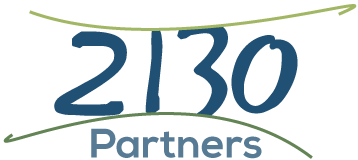Is There A Common Language for Leadership?
 Have you ever wondered whether there is any common language that exists for all humans and, if so, how knowing about that language might help you be a more effective as a leader? Well, there is and researchers have called it “deep metaphors.”
In the November/December 2008 issue of Spirituality & Health magazine, Managing Editor Betsy Robinson’s article, “Our Common Language,” offers a very insightful summary of work done by Harvard Business School professor and sociologist Gerald Zaltman, Ph.D. and his team across 12,000 in-depth interviews in more than 30 countries.
Have you ever wondered whether there is any common language that exists for all humans and, if so, how knowing about that language might help you be a more effective as a leader? Well, there is and researchers have called it “deep metaphors.”
In the November/December 2008 issue of Spirituality & Health magazine, Managing Editor Betsy Robinson’s article, “Our Common Language,” offers a very insightful summary of work done by Harvard Business School professor and sociologist Gerald Zaltman, Ph.D. and his team across 12,000 in-depth interviews in more than 30 countries.
Dr. Zaltman and his son, Lindsay Zaltman, have described their research in their book Marketing Metaphoria: What Deep Metaphors Reveal About the Minds of Consumers. While the consequences for marketing are dramatic, today we are more interested in how a working understanding of these metaphors will assist you in your leadership, your skill at conflict resolution, and your understanding of and ability to clear upsets.
According to Robinson, these deep metaphors are unconscious, universal, basic frames or orientations we have to the world around us. In the language of the work of 2130 we’d call it “the instant, automatic, and largely unexamined context or paradigm in which you live your life.” The researchers have identified seven main lenses:
1) Balance – justice, equilibrium, interplay
2) Transformation – change in state, status, substance, circumstance
3) Journey – meeting of past, present and future
4) Container – connotes inclusion or exclusion
5) Connection – relating to oneself & others
6) Resource – source of support
7) Control – sense of mastery, vulnerability, well-being
and four subsidiary ones:
1) Movement or Motion – related to journey
2) Force – power that can compel or constrict
3) Nature – not from humans, growth and evolution
4) System – gives order
If you’d like a visual experience of these lenses, go to: http://www.youtube.com/watch?v=2exh6i6T6tg
Two very important dimensions of this work are the emotions and beliefs that we have connected with each of these deep metaphors and the fact that we cannot express ourselves without using the metaphors. Put simply, our conversations are full of phrases, which arise out of these metaphors, and they all have emotional baggage with them. Since we all use the same deep metaphors when relating to the same situations, it is the emotions that we have historically attached to each that yield the connecting or conflict that arises from each conversation. In our 2130 Partners’ language, this is the “stuff that fills our File Cabinets.”
Your ability to resolve conflicts, dispel upsets, and be an effective, productive leader will all be greatly enhanced by learning about and observing these deep metaphors in the situations you encounter. Robinson offers several helpful practices and exercises:
1) Make a list of the emotions and beliefs you have associated with each metaphor.
2) When you are in the middle of conflict, realize that there are deep metaphors at work and the parties have differing, perhaps extreme, emotions and beliefs associated. Find a way to appreciate the others’ basis in the conversation.
3) Find a way to sketch out a shared vision for the parties – what would life be without the conflict? In 2130 Partners we call this finding a Shared Yonder Star for the conversation and the relationship. Where will we be when it all turns out? Build a productive conversation from that commonality.
While it may seem difficult or awkward at first, viewing your encounters through the lens of deep metaphors and appreciating the generally unconscious, unexamined and often differing emotions and beliefs associated will almost certainly increase your conversational capacities and your ability to lead effectively.
Leadership: The OODA Loop
 Being powerful in translating intentions into reality and sustaining them requires presence and adaptability in the face of life’s circumstances – circumstances that can change every moment. Where can we turn for tools to support ourselves?
The United States military has long taught our special ops teams and fighter pilots a thought process called the OODA Loop. These teams function in relatively small units who have large assignments with very limited time and resources. They train incessantly and plan their missions in incredible detail. Yet, no plan survives its collision with reality and conditions in the field often differ from those on the planning table.
Being powerful in translating intentions into reality and sustaining them requires presence and adaptability in the face of life’s circumstances – circumstances that can change every moment. Where can we turn for tools to support ourselves?
The United States military has long taught our special ops teams and fighter pilots a thought process called the OODA Loop. These teams function in relatively small units who have large assignments with very limited time and resources. They train incessantly and plan their missions in incredible detail. Yet, no plan survives its collision with reality and conditions in the field often differ from those on the planning table.
Adherence to the original plan would sometimes mean immediate capture or death and certain failure. Given their commitment, failure is not an option and “all or nothing” is often the choice. They must be able to make sometimes dramatic adjustments to achieve mission objectives and extract themselves with minimal to no casualties.
The OODA Loop thought process is an excellent antidote to holding onto the way it was supposed to be, the resources they were supposed to have, and the unfairness of the situation. The acronym simply means:
1) Observe the actual “ground truth” – the way that it is and the way that it isn’t rather than how it was supposed to be. 2) Orient to the actual situation, the observable roadblocks and potholes, the unknowns, and the resources available. Consider the options and strategies that are available. 3) Decide on a path and how long you can go before reorientation is required. 4) Act on your plan 5) Immediately start this process over
In Organizational Development circles the Action Research people would be most comfortable with this thought process.
In your world, how can you apply this simple process to adjust to "the ground truth" you and your organization are facing? How can this OODA loop concept benefit your leadership development?
Creating Your Bold Vision - The Mid-Year Review
 In mid-December we wrote one of our year end, "get ready for next year" blog posts called, "Creating Your Bold Vision." Now that we are moving in to the second half of the year we are wondering - how's that working for you?
In mid-December we wrote one of our year end, "get ready for next year" blog posts called, "Creating Your Bold Vision." Now that we are moving in to the second half of the year we are wondering - how's that working for you?
Traditionally at the end of the year the majority of our clients and friends are working on “what’s next.” The effort ranges from New Year’s resolutions, to budgets, to creating an entirely new vision and, (hopefully), strategy to go with it. Often somewhere in the first quarter, (if not actually in January), these "best of intentions" fall to the wayside. As the economy continues to be challenging and the levels of stress seem to be in an unprecedented range we thought now would be a good time to "look up and out" and revisit the idea of a bold vision in 2011.
Most of the time, when we talk about "bold vision" we find these efforts produce plans based on past experience, rather than launching a truly bold vision. So to clarify what we mean, we say vision has more to do with a dream for the future than what’s happened in the past. This is a really critical point. When teams go to create a vision they really think they are working on the future, but this "predictions based on the past" almost always dominates the conversation and people aren't even aware of it. (Next time you are in a high level strategy session or meeting about vision, see if you can detect what we are pointing to here. If you need more clarity, we talk a lot about the differences in our book, Accelerate, in the section on Leadership Choice Point.)
In the book we also emphasize that most ”leadership” activity is based on looking backwards, reviewing results to-date, and building a plan forwards from that past. There is nothing wrong with this. As human beings our minds and memories are constructed to have a “database” that builds on past experience. If we didn’t have a “cumulative learning ability” we would be helpless. Every moment would be new. We wouldn’t be able to find home at night, wouldn’t recognize it when we got there, and strangers would occupy it if we couldn’t draw effectively from our past experience. That’s the good news part.
The bad news part is that past-based predictions also keep us enslaved to what’s stored in our mental database, (or what we fondly call “the mental File Cabinet.”) It keeps our attention on our limitations. For example, we know the story of a head-hunter who was working on a placement. He had spoken with a potential candidate and told him, “I can’t present you for this CEO job, for which you are an excellent candidate, because you don’t have a chemistry degree.” The last CEO of the particular company had failed. He had a chemistry degree and the Board of Directors insisted on the new candidates having one also. So it’s an interesting issue. In this example, if a chemistry degree could predict and determine success, why did the previous guy fail? Why does it make it a given that this other outstanding candidate would fail because he doesn’t have one? Somewhere in the past, this notion became a “predictor of success” and even in the face of evidence to the contrary, it’s still being pursued. (This is why we used the strong language “enslaved” in the first sentence of this paragraph.)
It gets worse when we are in this "predictive state" and also creating and executing on a vision. Check your own thoughts here and see how often you can be truly creative and go for something that is not a projection of the current path of your life, your resume, your finances, your job…you see where this is going. Borrowing from the article I will cite below, we could call this “remembering the future.”
The Wall Street Journal Weekend Edition on 12-12-10 included an article, “Why The Mind Sees the Future in the Past Tense,” by Matt Ridley in which the author points out that recent neuroscience studies show the same parts of the mind hold our episodic memories and our imagined futures. Given the evidence here, it’s no wonder the “predictable” dominates our thinking.
 What excited me about the article were the studies that show that, “the more unexpected something is, the more conscious we are of it.” Your brain has to work harder when what shows up doesn’t match prediction, or expectation. What this means to me is that the most highly leveraged way to get yourself and your team in to powerful action is to start throwing new stuff in front of your collective brains. Create a BOLD vision that you can’t prove based on the past. You will be stimulated, more conscious, and therefore more present. You will be unleashing creativity instead of invoking your past experience, circumstances, knowledge, (or lack of it), and limitations.
What excited me about the article were the studies that show that, “the more unexpected something is, the more conscious we are of it.” Your brain has to work harder when what shows up doesn’t match prediction, or expectation. What this means to me is that the most highly leveraged way to get yourself and your team in to powerful action is to start throwing new stuff in front of your collective brains. Create a BOLD vision that you can’t prove based on the past. You will be stimulated, more conscious, and therefore more present. You will be unleashing creativity instead of invoking your past experience, circumstances, knowledge, (or lack of it), and limitations.
I am not being “Pollyanna” or encouraging “woo-woo” here. Once your new bold vision, or as we call it, “Yonder Star” is created, it’s time to be responsible for the past. It’s time to get very clear about your situation – “the way that it is and the way that it isn’t.” If you start looking from the perspective of your Yonder Star as if it is already fulfilled, your mind will start discovering what it did to get there. It will get very excited about remembering. (Our partner, Alanna Levenson, calls that “creating future memories.”)
In his blog post, “Strategy Slam’”, a long-time colleague, Russ Phillips, recommends going to Denny’s by yourself with a pen and pad to do your creative thinking. I am much more creative in dialogue with other committed players. Many people wait for adversity to set in, and it will, sooner or later, to force themselves and their associates to get creative…”sort of a create or die strategy." There are lots of ways to “get yourself there.” What gets you in action for a bold inquiry? What’s your most creative environment? What calls forth your commitment? What stops you? These may be the most powerful questions you can ask yourself as you revisit, resurrect, or invent for the first time your bold vision for 2011!
